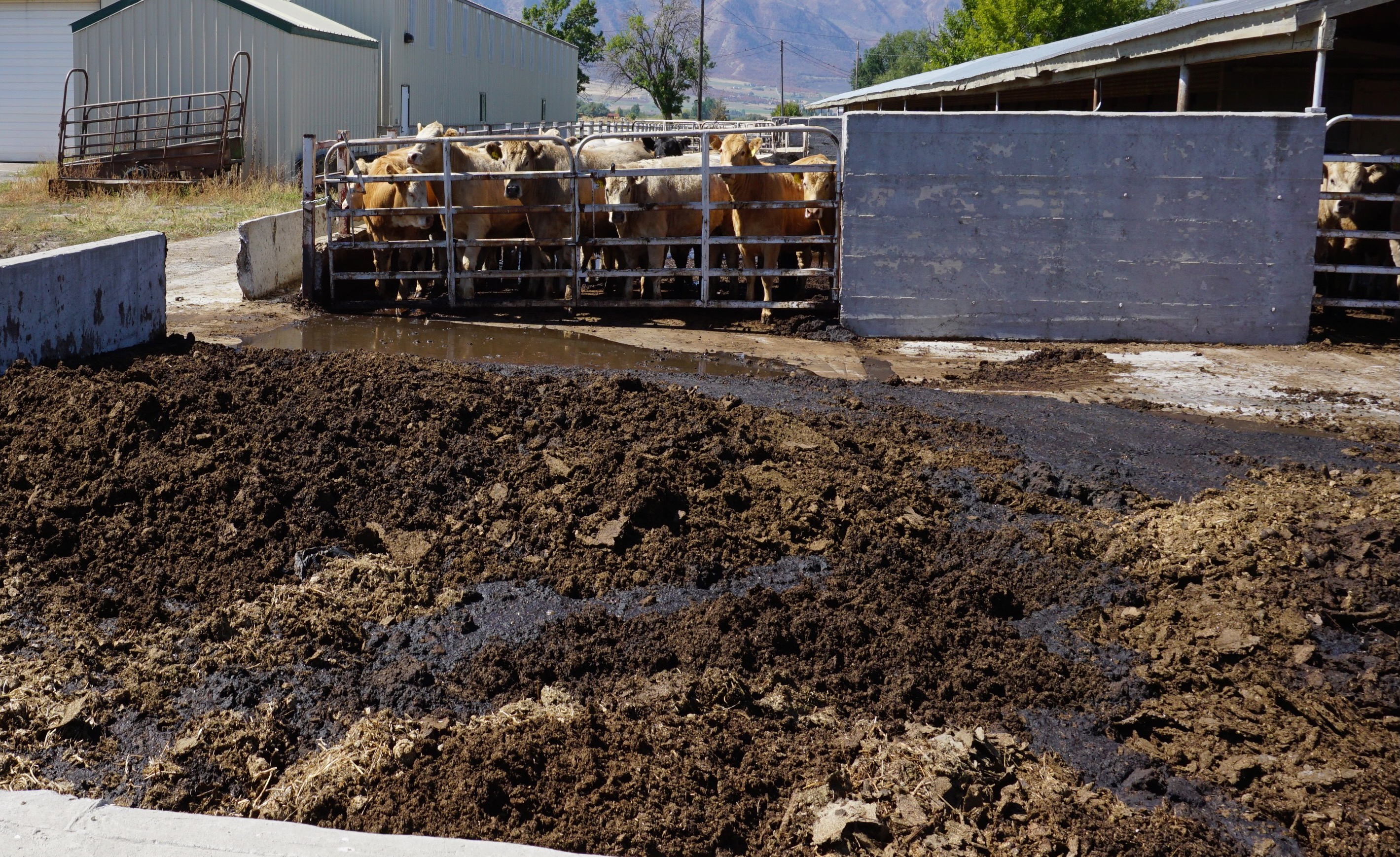Options for Solid Manure Storage During Wet, Saturated Conditions

Rapid snow melt, a wet spring, or other conditions that result in a lot of extra moisture and saturated ground can create manure storage problems for AFO/CAFOs. Options are limited when the lagoons and storage ponds are full and the ground is saturated. At this point, damage control is often the primary focus.
Key Points To Keep in Mind
- The main goal is to prevent manure and/or wastewater from getting into a water of the state.
- Avoid letting manure/wastewater enter adjacent ditches and waterbodies. For the most part, this means ensuring that manure/wastewater does not leave your property.
- If manure/wastewater leaves your property you should contact Don Hall at the Division of Water Quality (DWQ) within 24 hrs of a discharge, at 801-536-4492 or dghall@utah.gov.
Some Options if Your Manure Storage Structure is Overflowing
Approved Measures
- Create a temporary manure storage structure at your facility to increase your manure holding capacity.
- Use bales of straw, old hay, or cinder blocks to build a temporary manure storage area.
- A small berm around the temporary manure storage structure may be needed to keep any liquid runoff contained.
- Develop a manure stockpile area in an accessible area of a field and haul manure there.
- Manure stockpile areas should have no run-on, or run-off from the temporary manure storage area.
- Berms are often used to prevent run-on, and contain any run-off.
- Short-term field storage areas are not recommended on coarse soils to a depth of five feet such as old river beds, or potential gravel sites.
Emergency Measures
- Apply manure to fields that have berms to contain any runoff.
- If you must discharge, apply the manure to fields that are the furthest away from streams.
- A minimum set-back distance of 100 feet is required around canals or drainage ditches.
- Consider increasing the setback distance when the ground is saturated.
- If possible, berm the fields on the downhill side to retain manure/wastewater on site.
Options if Too Much Liquid from the Solid Manure
Sometimes, the solid manure capacity is fine, but there is just too much liquid (e.g., snowmelt, rain) with the solid manure that is creating problems.
Approved Measures
- Use straw bales or old hay to absorb and help contain some of the liquid.
- Create a short-term runoff pond near the manure storage area to contain the liquid.
- Construct by digging, creating berms, or a combination of the two.
- The wastewater should not be more than 2 feet deep.
- Short-term runoff ponds should not hold wastewater more than 90 days total in a year.
- Use berms to prevent runoff from leaving your property. Please note, this will result in the runoff building up in some other area on your property.
Emergency Measures
- Temporary holding ponds, or containment trenches deeper than 2’.
Exemptions for Discharges
If you have an approved nutrient management plan (NMP), and are following it, then exemptions from penalties for discharges due to catastrophic weather and snow-melt events may be possible.
Who may qualify?
- Those with CAFO permits.
- Those who are enrolled in AgVIP through UDAF.
- Small and medium AFOs who have obtained an AFO Permit-by-Rule.
What needs to be done?
- Make sure you are following your NMP and have records to document that.
- Keep records of the precipitation you are getting at your farm.
- Document the efforts you have made to avoid having a discharge. Take pictures before, and after, to document conditions at your location.
- If you haven’t discharged, but may, keep Don Hall in the loop.
- If you have a discharge, you should contact Don Hall at the Division of Water Quality (DWQ) within 24 hrs of the discharge, at 801-536-4492 or dghall@utah.gov.
Ultimately, the goal is to not let manure or wastewater get to a water of the state. It is better to contain the manure or wastewater on your property (even if not exactly as the regulations would mandate) than to have a discharge.
More Information
For more information, please contact:
Rhonda Miller at 435-797-3772 or rhonda.miller@usu.edu
Hannah Freeze at 435-764-6258 or hfreeze@utah.gov
Don Hall at 801-536-4492 or dghall@utah.gov

